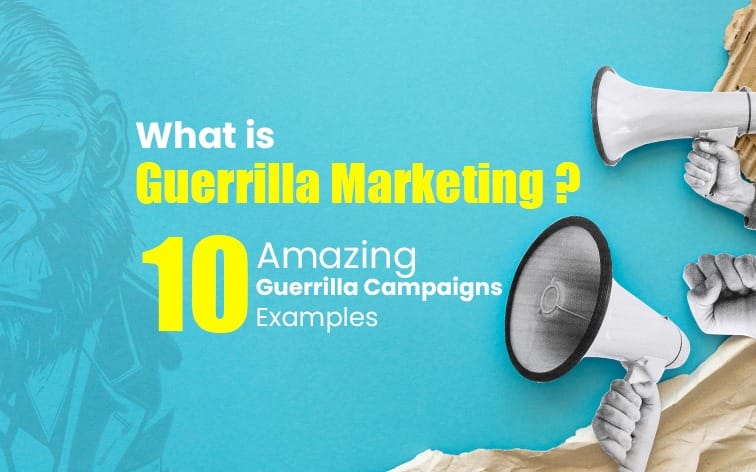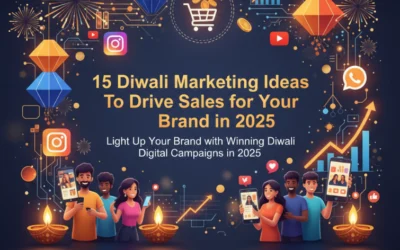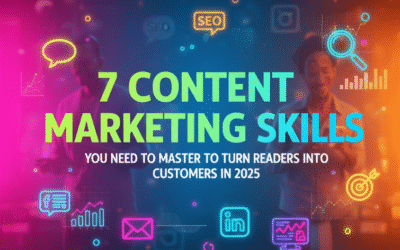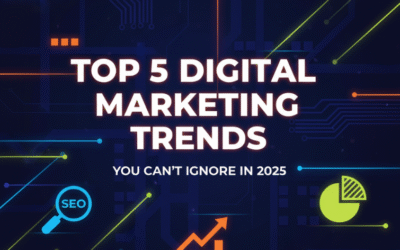In 2025, brands in India and all over the world are breaking through the noise with extremely original, creative marketing methods that spark conversations and leave lasting impressions. Gone are the days when only big budgets ruled the advertising world. Today, it’s about clever ideas, bold execution, and connecting with people where they least expect it.
If you’ve ever been surprised by a quirky street installation or a playful social media stunt, you’ve witnessed the magic of guerrilla marketing. It was on full display at the Maha Kumbh Mela 2025. Let’s dive into how these innovative campaigns are reshaping the way brands engage with audiences, especially in a dynamic marketing landscape where brands are jostling for recognition.
What Is Guerrilla Marketing?
Guerrilla marketing is a creative advertising strategy that uses surprise and unconventional interactions to promote products or services. The term, inspired by guerrilla warfare, was popularized by Jay Conrad Levinson in 1984 and focuses on low-cost, high-impact tactics designed to catch people off guard and create buzz. Unlike traditional marketing, which relies on repetitive ads and big budgets, guerrilla marketing thrives on imagination, energy, and direct engagement.
Key differences from traditional marketing include:
- Budget: Guerrilla marketing is cost-efficient, making it ideal for startups and small businesses competing with larger brands.
- Approach: It emphasizes creativity over spend, aiming to entertain and engage rather than preach or simply inform.
- Measurement: Success is often gauged by word-of-mouth, emotional connection, and viral potential, rather than just sales figures.
- Follow-up: Building relationships and fostering ongoing engagement is central to guerrilla marketing, as opposed to a one-off sale.
In 2025 and in this volatile market, where diverse audiences and crowded markets demand attention-grabbing ideas, guerrilla marketing offers a fresh way for brands to stand out and build memorable connections.
Key Elements of Guerrilla Strategy in Marketing
A successful guerrilla strategy in marketing blends several core elements to ensure campaigns are both memorable and effective:
- Surprise: The foundation of guerrilla campaigns is unexpected. Whether it’s a flash mob in a mall or a quirky installation on a busy street, surprising the audience ensures the message stands out in their minds.
- Creativity: Imagination is the currency of guerrilla advertising. Brands must think outside the box, using their environment, culture, and current trends to craft unique experiences that resonate with their target audience.
- Cost-Efficiency: Unlike traditional campaigns, guerrilla strategy in marketing relies on minimal resources. The focus is on maximizing impact with minimal spend, making it accessible for businesses of all sizes.
- Emotional Bond: To establish a connection between the brand and its audience, successful guerrilla campaigns appeal to feelings such as joy, nostalgia, humor, or even shock. This emotional resonance drives word-of-mouth and social sharing.
- Viral Potential: The ultimate goal is to create content or experiences that people want to share, both online and offline. Viral campaigns can exponentially increase reach without additional spending, efficiently utilizing the power of social networks and community buzz.
In India, where emotional storytelling and community engagement are powerful motivators, these elements are especially potent; it is a great tactic for brands looking to make a mark.
Different Types of Guerrilla Advertising
Guerrilla advertising refers to a variety of tactics, each tailored to different environments and objectives. Here are the primary types relevant to the Indian market:
- Street Marketing: This involves direct engagement with audiences in public spaces. Examples include creative billboards, flash mobs, or branded installations in high-traffic areas. Street marketing agencies in Chennai utilize bustling urban centers, where foot traffic is high and opportunities for surprise abound.
- Ambient Marketing: Brands use everyday environments—like bus stops, benches, or even elevators—as canvases for unexpected advertising. By blending into the surroundings, ambient marketing catches people off guard and sparks curiosity.
- Stealth Marketing: Here, the campaign is subtly integrated into daily life, often without the audience realizing they’re being marketed to. Examples include product placements or influencers using products in organic settings.
- Event Ambushes: Without formal sponsorship, brands capitalize on significant events, such as concerts, sporting events, or festivals, by creatively connecting with them to generate buzz.
- Experiential Tactics: These campaigns invite people to participate, touch, or interact with the brand. Pop-up experiences, interactive installations, or live demonstrations are common, fostering deeper connections and memorable moments.
These diverse forms of guerrilla advertising allow brands, irrespective of scale, to tailor their approach based on budget, audience, and desired impact.
Top Guerrilla Tactics That Work in 2025
As technology evolves and audiences become more discerning, guerrilla tactics in 2025 are blending digital innovation with real-world engagement:
- Augmented Reality (AR) Experiences: Brands are using AR to create interactive campaigns that overlay digital content on real-world settings. For example, an AR filter that transforms a city monument into a brand mascot, encouraging users to share their experiences on social media.
- Social Media Stunts: Viral challenges, hashtag campaigns, and influencer collaborations are driving engagement. By designing campaigns that encourage user-generated content, brands amplify their reach organically.
- Interactive Installations: From pop-up art in parks to immersive brand zones in malls, interactive installations invite participation and sharing, making the audience part of the story.
- Flash Mobs and Live Performances: Coordinated performances in public spaces draw crowds and media attention, creating memorable spectacles that are widely shared online.
- Gamification: Businesses are incorporating games, contests, and scavenger hunts—often linked to mobile apps or QR codes—to engage audiences and incentivize participation.
- Real-Time Personalization: Using data and AI, brands tailor guerrilla tactics to specific audiences, delivering personalized experiences that feel relevant and timely.
In this tech-driven world, where smartphone penetration and social media usage are soaring, these modern guerrilla tactics are helping brands create buzz and build community in powerful new ways.
10 Amazing Guerrilla Marketing Examples
Below are 10 guerrilla and aggressive marketing examples—from India and around the world—that showcase the creativity and impact of this approach:
1. Amazon India Chai Carts (2015)

To reach small-town entrepreneurs, Amazon launched mobile tea carts in Bengaluru, serving chai and business advice.
2. Anando Milk Strong Child (2010)

A billboard in Mumbai showed a child lifting a building, highlighting the strength milk provides.
3. Snapdeal Yahan Se Kharido (2015)

Snapdeal trolled Flipkart by placing its banner below Flipkart’s, hijacking their outdoor ad space.
4. Coca-Cola Small World Machines

Installed vending machines in Delhi and Lahore to connect people from India and Pakistan via live video.
5. IKEA Subway Apartment

Transformed a subway car into a furnished apartment, letting commuters experience IKEA products firsthand.
6. Red Bull Stratos Jump

Sponsored a skydiver’s jump from the stratosphere, streamed live worldwide.
7. Coca-Cola Hug Me Machine

A vending machine in Singapore dispensed free Coke for hugs, spreading positivity.
8. McDonald’s Crosswalk Fries

Turned a zebra crossing into French fries using paint and signage.
9. Nike Unlimited Stadium

Created a virtual racetrack in Manila where runners raced their digital avatars.
10. Adidas Adizero Desert Runner

Built a massive art installation in the desert to launch a new shoe, creating a mirage effect.
These guerrilla advertising examples demonstrate the power of creativity, surprise, and emotional resonance—qualities that are especially relevant for businesses seeking to stand out in crowded markets.
Benefits and Risks of Guerrilla Marketing
Benefits:
- Cost-Effective: Guerrilla strategies deliver high impact without the hefty price tag of traditional advertising, making them ideal for startups and SMEs.
- Viral Potential: Creative campaigns often go viral, reaching audiences far beyond the initial target group through social sharing and media coverage.
- Emotional Engagement: By surprising and delighting audiences, guerrilla advertising strategies foster strong emotional connections, increasing brand loyalty.
Risks:
- Misinterpretation: Extremely innovative guerrilla tactics can sometimes be misunderstood, leading to negative publicity or confusion among the audience.
- Legal Issues: Campaigns that use public spaces or mimic official signage may run into regulatory hurdles or require special permissions.
- Unpredictable Results: The success of guerrilla strategies depends heavily on timing, execution, and audience reaction, making outcomes less predictable than traditional campaigns.
Careful planning and cultural sensitivity are crucial to maximize benefits and minimize risks.
Conclusion
Guerrilla advertising strategies are more than just a buzzword; they’re a mindset that empowers brands to break free from convention, connect with audiences on a deeper level, and create moments that people remember and share.
Whether you’re a startup with a shoestring budget or an established brand looking to make waves, embracing guerrilla tactics and enlisting an experienced guerrilla marketing agency in Chennai can help you stand out and build lasting brand love in 2025 and beyond. Ready to surprise your audience and make your brand unforgettable? The next great guerrilla campaign could be yours!
FAQs (Frequently Asked Questions)
What is Guerrilla Marketing?
Guerrilla marketing is a creative advertising strategy using surprise and unconventional interactions for low-cost, high-impact promotion.
How does Guerrilla Marketing differ from traditional advertising?
Guerrilla marketing prioritizes creativity, low cost, and viral potential over traditional large budgets and repetitive ads.
What are the key elements of a successful Guerrilla Marketing strategy?
Key elements of a guerrilla strategy include surprise, creativity, cost-efficiency, emotional bonding, and viral potential to maximize impact.
What are common types of Guerrilla Advertising?
Common guerrilla advertising types are street marketing, ambient marketing, stealth marketing, event ambushes, and experiential tactics.
What are the top Guerrilla Marketing tactics for 2025?
Top guerrilla tactics in 2025 include Augmented Reality (AR) experiences, social media stunts, interactive installations, flash mobs, and gamification for engagement.
What are the benefits and risks of using Guerrilla Marketing?
Benefits include cost-effectiveness and viral potential, while risks involve misinterpretation, potential legal issues, and unpredictable results.




